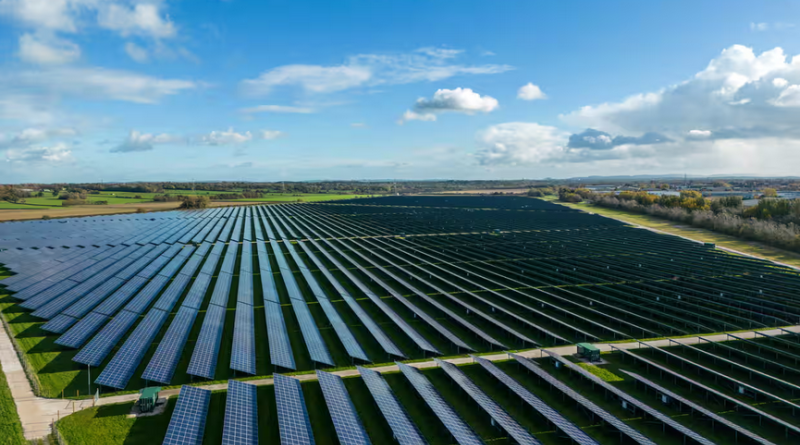Great Britain on track to generate record levels of summer solar power

Shotwick solar farm in Deeside, Wales. The government plans to triple the UK’s solar energy capacity by the end of the decade. Photograph: Christopher Furlong/Getty Images
Great Britain is on track to generate record levels of solar power this summer, according to expert forecasts, as the government pushes forward plans to triple the country’s solar energy capacity by the end of the decade.
Solar power output between June and August is likely to climb by almost a quarter compared with the same period last year.
The forecasts, compiled for the Guardian by the energy market data company ICIS, show solar power output climbing 16% above the previous summer record from 2022.
Solar power generation in the meteorological summer is likely to reach 5.86 terawatt hours by the end of August, according to the figures, after monthly output climbed just above 2TWh for the first time in June.
Despite the relatively poor weather this summer, it is still possible to generate significant solar power during the months with more daylight hours. The photovoltaic cells in solar panels do not need direct sunlight to operate, they work even on cloudy days and are actually less efficient when they get too hot.
Britain’s solar generation is on track to increase further in the years ahead after the Labour government approved three major solar farms in the east of England within weeks of coming to power. Tory ministers had blocked the projects because of local opposition.
Once built the sites at Gate Burton in Lincolnshire, Mallard Pass on the border between Lincolnshire and Rutland and Sunnica’s energy farm on the Suffolk-Cambridgeshire border will deliver the equivalent of two-thirds of the solar power capacity installed on rooftops and on the ground in the whole of last year.
The government is expected to make another decision within weeks on whether to defy local opposition by giving the green light to Britain’s biggest solar farm at the Cottam site on the Nottinghamshire and Lincolnshire border, which would cover an area eight times the size of Hyde Park in central London.
As part of the government’s “rooftop revolution” Keir Starmer has promised that millions more homes will be fitted with solar panels in order to bring down domestic energy bills and help meet the manifesto pledge to make the UK a clean energy superpower.
The government has promised to triple the UK’s solar power capacity by 2030, while doubling its onshore wind and quadrupling its offshore wind capacity. Local communities, however, are expected to oppose major developments in rural areas that could include large substations, pylons and overhead power lines.
The chief executive of Solar Energy UK, Chris Hewett, said the summer record “demonstrates how the UK’s solar generation capacity is growing at remarkable pace, both on rooftops and on the ground”.
“With Ed Miliband’s promise of a ‘solar revolution’, his approval of three large-scale solar farms this summer and expectations that new homes and buildings will be effectively required to have solar panels, growth is only going to accelerate, driving down bills and emissions along the way,” he said.
A spokesperson for the Department for Energy Security and Net Zero said: “Solar power is at the heart of our mission to make Britain a clean energy superpower and more energy independent.
“In one week, the energy secretary consented to more solar power than has been installed in the past year and more widely, we are going further and faster with a solar rooftop revolution to ensure new homes are fit for a net zero future.”




